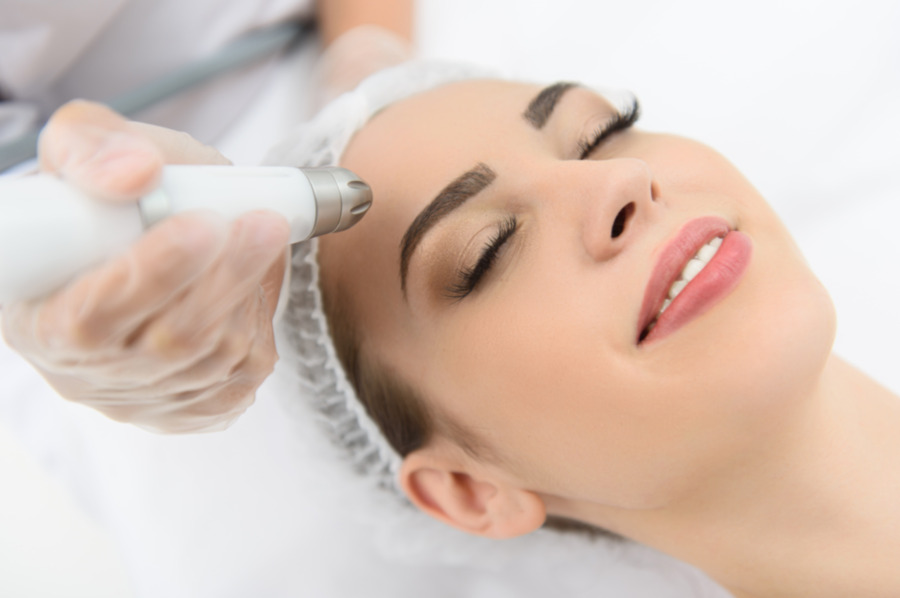
Peeling, a widely sought-after cosmetic treatment, is a versatile solution for addressing various skin concerns and enhancing overall skin health. This procedure involves the application of a chemical or mechanical solution to exfoliate the skin’s outer layer, revealing smoother, brighter, and rejuvenated skin underneath. Let’s delve deeper into the world of peeling to understand its purpose, classification, procedure, contraindications, and post-treatment care from shakirovna.com in Dubai.
Page Content
What is Peeling?
Peeling, also known as chemical exfoliation or derma peeling, is a cosmetic procedure aimed at improving the appearance and texture of the skin. It works by removing dead skin cells from the skin’s surface, promoting cell turnover, and stimulating collagen production, resulting in a more youthful and radiant complexion.
Purpose of Peeling
Peeling serves multiple purposes, including:
Exfoliation: Removing dead skin cells and debris from the skin’s surface, revealing smoother and healthier skin.
Acne Treatment: Peeling can help unclog pores, reduce inflammation, and improve acne-prone skin.
Hyperpigmentation Correction: Peeling can lighten dark spots, sun damage, and uneven skin tone by promoting the shedding of pigmented skin cells.
Anti-Aging: Peeling stimulates collagen production, which can reduce the appearance of fine lines, wrinkles, and other signs of aging.
Skin Rejuvenation: Overall, peeling enhances skin texture, brightness, and clarity, resulting in a more youthful and radiant complexion.

Classification of Peeling
Peeling can be classified based on the depth of its impact on the skin and the method of exposure.
Depth of Impact
Superficial Peeling: Targets the outermost layer of the skin (epidermis) and is suitable for mild skin imperfections.
Medium Peeling: Penetrates deeper into the epidermis and may also affect the upper dermis, addressing moderate skin concerns.
Deep Peeling: Penetrates into the mid to lower dermis, addressing severe skin imperfections and requiring longer recovery times.
Method of Exposure
Chemical Peeling: Utilizes various chemical solutions, such as alpha hydroxy acids (AHAs), beta hydroxy acids (BHAs), and polyhydroxy acids (PHAs), to exfoliate the skin.
Mechanical Peeling: Involves physical exfoliation techniques, such as microdermabrasion or dermaplaning, to remove dead skin cells.
Enzyme Peeling: Utilizes enzymes, typically derived from fruits, to gently exfoliate the skin and improve texture.
Ultrasonic Peeling: Involves the use of ultrasonic waves to exfoliate the skin and enhance product penetration.
Mesopilling
Combines the benefits of chemical peeling with mesotherapy, delivering active ingredients directly into the skin.
Procedure of Peeling:
The peeling procedure typically involves several steps:
Preparation: Before the procedure, the skin is prepared by cleansing and removing any makeup or impurities.
Peeling Application: The peeling solution is applied to the skin and left on for a specific duration, depending on the type and depth of the peel.
Moisturizing: After the peeling solution is removed, the skin is moisturized to restore hydration and soothe any discomfort.
Finalization: The procedure concludes with the application of sunscreen to protect the skin from sun damage and minimize the risk of post-peel complications.
Healing Process of the Skin:
Following the peeling procedure, the skin undergoes a healing process that includes:
Inflammation: The skin may appear red, swollen, or sensitive immediately after the peel as the body’s natural healing response is initiated.
Formation of a New Layer: Over the next few days to weeks, the outer layer of the skin sheds, revealing smoother and rejuvenated skin underneath.
Remodeling of the Extracellular Matrix: Collagen production is stimulated, resulting in firmer, more resilient skin with improved texture and tone.
Contraindications for Peeling:
While peeling offers numerous benefits, it may not be suitable for everyone. Contraindications include:
Wounds, Lesions, or Inflammation: Peeling should not be performed on irritated or damaged skin, as it may exacerbate the condition and lead to complications.
Fungal or Bacterial Infections: Active infections on the skin can spread or worsen with peeling treatments.
Skin Conditions: Individuals with herpes, eczema, psoriasis, or other chronic skin conditions may experience adverse reactions to peeling solutions.
Allergic Reactions: Those with known allergies to peeling ingredients or a history of allergic reactions should avoid peeling treatments.
Tendency to Scarring: Individuals with a tendency to develop keloids or hypertrophic scars should proceed with caution, as peeling may increase the risk of scarring.
Skin Care After Peeling:
Proper post-peeling care is essential to optimize results and minimize complications. This may include:
Hydration: Keep the skin well-hydrated with moisturizers and serums to support the healing process.
Sun Protection: Apply sunscreen regularly to protect the skin from UV damage and prevent hyperpigmentation.
Gentle Cleansing: Use gentle cleansers and avoid harsh exfoliants or abrasive scrubs that may irritate the skin.
Avoidance of Irritants: Refrain from using products containing alcohol, fragrances, or other irritants that may sensitize the skin post-peel.
Follow-Up Care: Attend follow-up appointments as recommended by your skincare provider to assess the skin’s progress and adjust treatment plans if necessary.

Peeling in Dubai
In Dubai, individuals can experience the benefits of professional peeling treatments. With a range of peeling options, including the Almond Peel and Acne Balance Peel, clients can address their specific skin concerns and achieve a healthier, more radiant complexion. Our experienced aestheticians provide personalized consultations and treatments tailored to individual skin types and needs, ensuring safe and effective results.
Conclusion
Peeling is a highly effective cosmetic procedure that offers numerous benefits for improving skin texture, tone, and overall appearance. With various types of peels available, individuals can choose the option that best suits their skin concerns and goals. However, it is essential to undergo peeling treatments under the guidance of a qualified skincare professional to ensure safety and optimal results. Experience the transformative effects of peeling in Dubai and unlock radiant, rejuvenated skin today.






